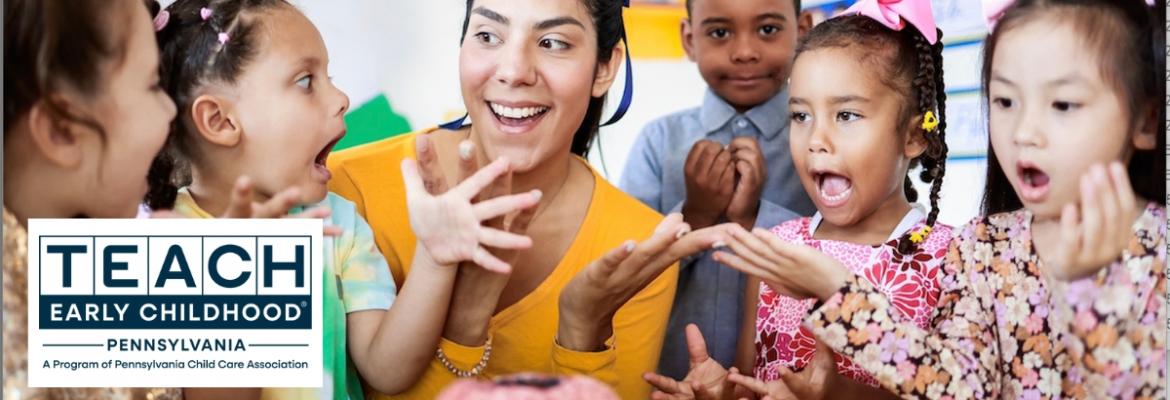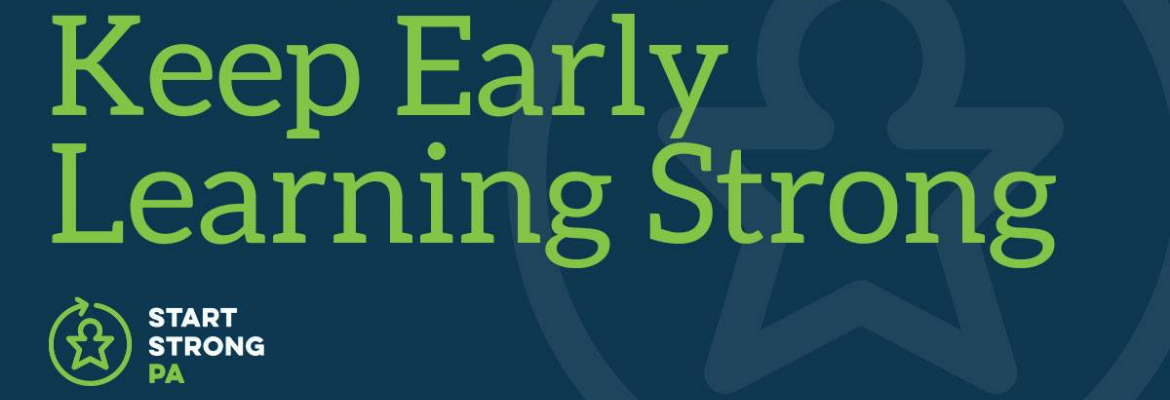Hot Issues
"2022 Market Rate Survey and YOU"
The webinar topics will include the importance of the Market Rate Survey, the elements of the survey, and how the information may be used. There will be time for questions and discussion. Joining us is the team from Penn State Harrisburg, Institute of State and Regional Affairs who are coordinating the survey collection and evaluation. They will also share the new complementary study they are working on to assess the Cost of Care.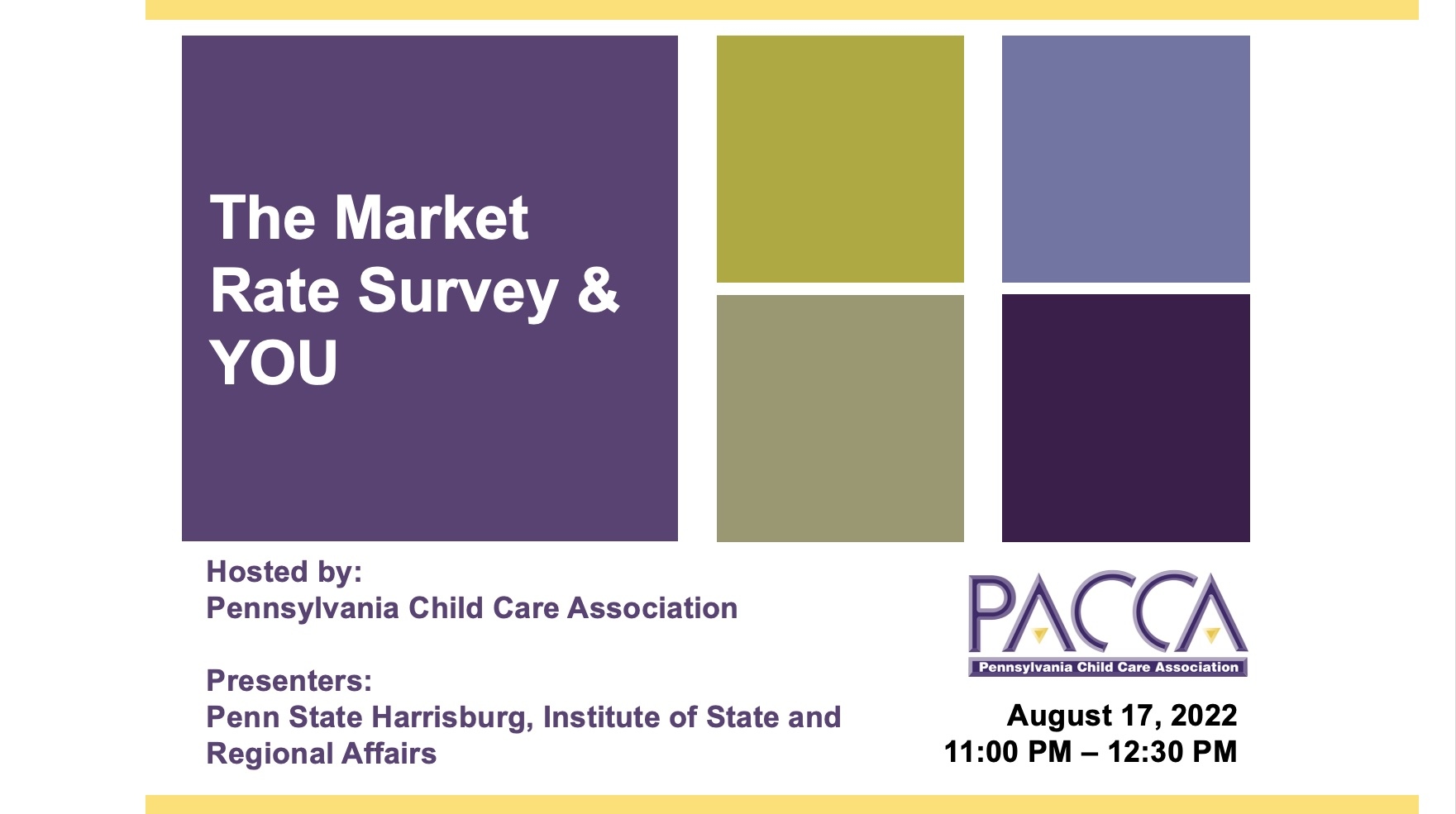
Vimeo link: https://vimeo.com/740922559
2022 Market Rate Survey and YOU! PowerPoint (pdf)
December 4, 2019
"2019 Market Rate Survey and YOU"
Every two years, the federal government requires that states conduct a Market Rate Survey of child care. PACCA partnered with OCDEL to conduct a webinar on Pennsylvania's Market Rate Survey and PELICAN - Provider Self Service. Updated information from child care providers will provide more accurate information to determine child care prices in Pennsylvania and will provide OCDEL with important data to compare private pay prices with the Child Care Works reimbursements known as base rates. In this webinar, OCDEL staff talk about the importance of the Market Rate Survey and explain how to access Provider Self-Service, what programs will see when they log into their program, and how to ensure that current information from their program is reflected as OCDEL looks at Child Care Works reimbursement rates.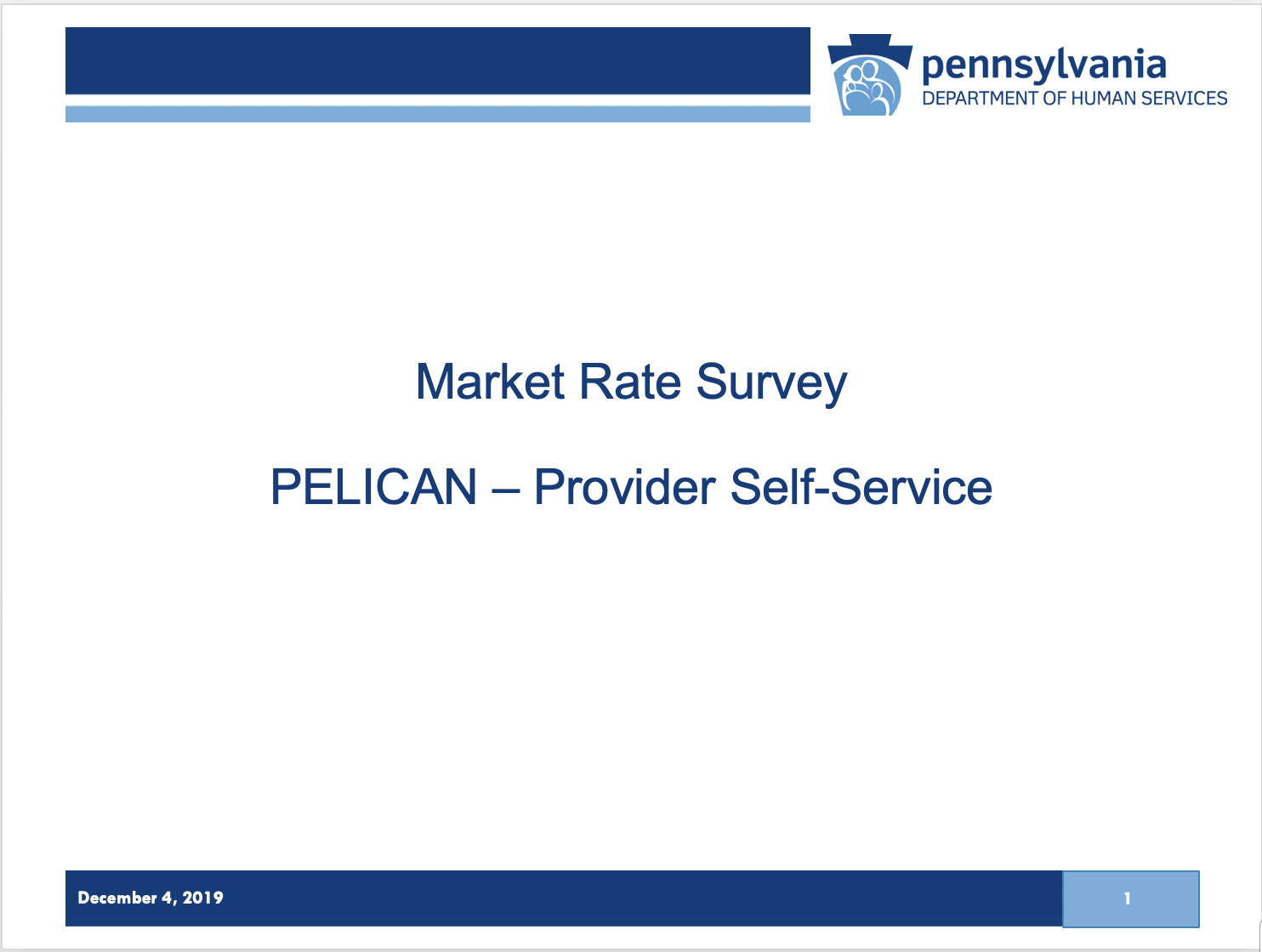
2019 Market Rate Survey and YOU - pdf -- PowerPoint of the slides used in the webinar
YouTube link: https://youtu.be/tdG9jWgrxe4
October 10, 2019
"Meeting the Requirements of CPSL: Ensuring the Safety of all Children in Care throughout PA"
In response to changes to the child abuse clearances required of child care providers, PACCA partnered with the Office of Child Development and Early Learning (OCDEL) to conduct the webinar Meeting the Requirements of CPSL: Ensuring the Safety of all Children in Care throughout PA. While over 500 registered for the webinar we know that many wanted the opportunity to view it again. Below is the link to the webinar conduct on October 9, 2019 with Tanya Vazquez and Diane Michel from OCDEL's Bureau of Certification, as well as the PPT from the session. Changes in the Child Protective Services Legislation (CPSL) also require individuals who have resided outside of PA within the past 5 years to provide clearances from other State(s) of residency. We have also attached below a list of contacts prepared by the State of Florida listing the state contacts for clearances.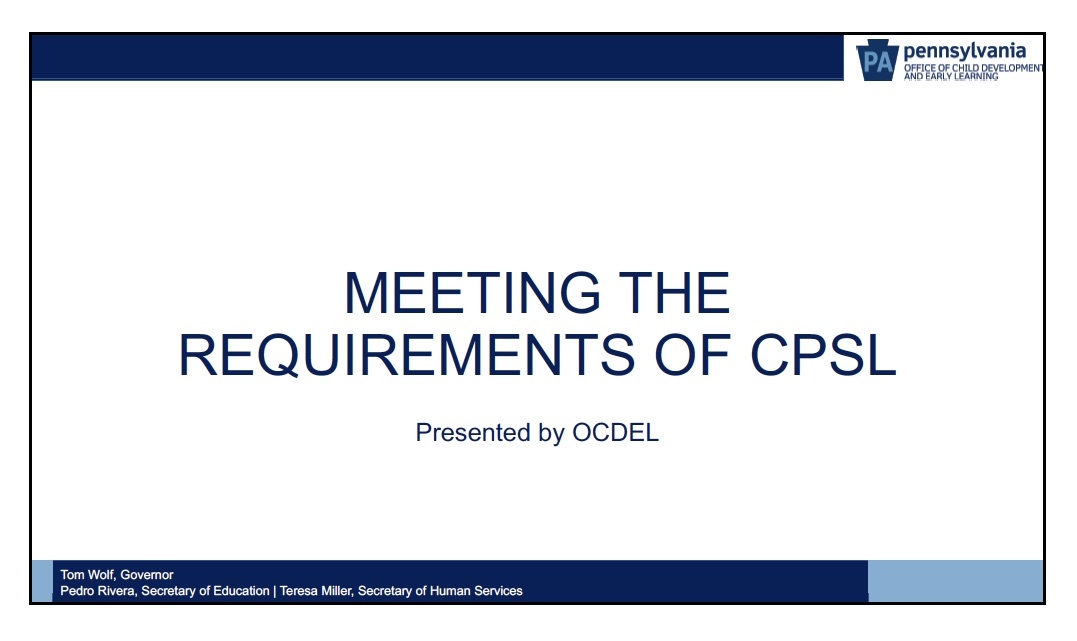
Meeting the Requirements of CPSL: Ensuring the Safety of all Children in Care throughout PA -- PPT from the presentation (pdf)
Adam Walsh State Contacts and Procedures for Child Abuse Registry Checks (FL - updated 9/25/2019) (pdf)
Map of OCDEL Regional Offices (pdf)
Coming Soon -- Answers to questions asked on the webinar
YouTube link: https://youtu.be/n_2ShW2i7sg
July 16, 2018
PACCA Survey: Carbon Monoxide Monitors in Child Care
Before the General Assembly left for summer recess there was a push to move a number of bills through the system. One of those bills, Senate Bill 439, PN 1759, would require carbon monoxide detectors/alarms in child care facilities if the facility uses a fossil fuel-burning heater, appliance, fireplace, or has an attached garage.The bill passed the Senate on May 23 and was referred to the Health Committee in the House. The House does not convene again until September 12th.
PACCA and PennAEYC are surveying child care providers to understand how many may be impacted by this rule change if passed and to determine the potential fiscal impact on programs. Both organizations will be sending out the same link.
The link to the survey is HERE: https://www.surveymonkey.com/r/PA_CO_Survey
If you respond to the survey via this email, please do not respond again if you receive a notification from PennAEYC.
We deeply appreciate your participation. The survey will close Friday, August 3, 2018 at 5:00 PM.
February 2, 2018
OCDEL Lifts Rate Freeze - What does it mean for my program?
The Department of Human Services (DHS), Office of Child Development and Early Learning (OCDEL) has lifted the rate freeze for STAR 3 and STAR 4 providers serving subsidized children. The Child Care Information Services (CCIS) will begin paying providers the Maximum Child Care Allowance (MCCA) or their private pay published rate, whichever is less, effective January 1, 2018.PACCA has fielded a lot of questions over the last few weeks about this announcement and wanted to share three of the Most Frequently Asked Questions.
- So ... rates are going to increase for STAR 3 and STAR 4 Providers?
Pennsylvania’s child care subsidy rates or the maximum child care allowance (MCCA), were last increased in FY 2007-2008 in response to the federal increase in minimum wage. In FY 2008-2009, DHS froze individual provider rates at whatever level the provider was currently being paid. Some providers were being paid the MCCA, but others fell below. Over the years, the providers whose rates were below the MCCA in FY 2008-2009, but whose private rates increased, could not pass those increases along to the CCIS.
For programs that began/opened after the FY 2008-2009 freeze, their MCCA was set based either at the MCCA or their published rate, the rate they charged private paying families, whichever was less. Once set, it could not be changed because they too were impacted by the freeze.
- How do I know if my private pay rates are at or below the MCCA?
- Since we haven't had a rate increase in over ten years, I stopped prioritizing updating my private pay rates with the CCIS. Can I do that now?
PACCA believes this is a good first step forward to address a basic structural inequity in the subsidy payment system. We recognize that while child care providers have engaged in quality improvement activities to increase their ability to provide high-quality early learning programs, they continue to be hindered by child care subsidy rates that have not changed in over a decade. We are working to change that.
In the meantime, we encourage you to reach out to Governor Wolf, Acting Secretary of the Department of Human Services Teresa Miller and OCDEL Deputy Secretary Suzann Morris thanking them for taking this first step.
A PDF version of this document is available HERE.
January 15, 2018
Rate Freeze lifted for STAR 3 & STAR 4 Providers
Diane P. Barber | Executive Director | Pennsylvania Child Care Association | Letter to Governor Tom Wolf & Department of Human Services Acting Secretary Teresa Miller (PDF)
On behalf of Pennsylvania's children, families and child care providers, thank you for your leadership and support for early childhood programs. Thank you for correcting an inequity in child care subsidy payment system for our highest quality STAR 3 and STAR 4 programs by lifting the freeze that held many below the maximum child care allowance reimbursement.
The availability of affordable, high-quality child care is crucial for all families in Pennsylvania. Pennsylvania’s child care subsidy system is a support that helps low-income working families find and sustain employment assured that their children are in safe, early learning environments.
As our child care providers have engaged in quality improvement activities to increase their ability to provide high-quality early learning programs, they have been hindered by child care subsidy rates that have not changed in over a decade. For many, an administrative decision made in FY 09-10 froze their basic rates below the maximum child care allowance paid by DHS. For our STAR 3 and STAR 4 providers in this situation, the playing ground was never level when less experienced programs could access higher rates of subsidy payments because they were newer and their costs could be reflected in their rates.
For more than 40 years, Pennsylvania Child Care Association (PACCA) has served as a resource and clearinghouse of information for practitioners, agencies, press, legislators and the general public. PACCA’s members operate nearly 1,800 center, group and family child care programs employing over 25,000 staff and caring for over 140,000 children aged birth through school-age. PACCA’s membership also includes Child Care Information Services (CCIS) who provide county-wide child care resource and referral services. Additionally, our members include those who have a business or personal interest in high-quality child care.
PACCA’s leaders and members share a commitment to providing high-quality child development and early learning opportunities to children in programs across the Commonwealth. Our members are devoted to assuring that the children in their care are happy and successful, and develop to their full potential as students, future employees, and citizens. Over 94% of our members who provide child care voluntarily participate in Keystone STARS and 61% have earned STAR 3 or STAR 4.
Again, we deeply appreciate your recognition of this problem and the steps you have taken to address it.
December 19, 2017
PACCA’s concern that the process for selecting Early Learning Resource Centers will disrupt an already fragile and stressed infrastructure of supports for Pennsylvania’s children, families, and child care programs
Diane P. Barber | Executive Director | Pennsylvania Child Care Association | Letter to Department of Human Services Acting Secretary Teresa Miller (PDF)May 5, 2017
Now is not the time to cut or move funding for child care. We can't afford to get it wrong in these early years
Diane P. Barber | Executive Director| Pennsylvania Child Care Association | Excerpt from letter sent to Senator Patrick BrowneMost working families struggle with the cost of high-quality child care. We have all seen the headlines that child care costs exceed the cost of college tuition. In Pennsylvania, families working, in training, or in school with incomes below 200% of poverty or for a family of four, earning less than $49,200, are eligible to apply for child care subsidy funding. As you know, this is not a free program, families contribute approximately 8% of their annual income as a co-pay.
Receiving child care subsidies allows families to work, sustain their families, and be assured that their children are safe and cared for. However, research tells us that the type of care and early learning opportunities that children experience in the first five years of life can mark their social, educational, and economic futures decades later. Choosing the right high-quality care and education program is imperative for families and their children.
This is where the Child Care Information Services (CCIS) play a huge role, not only in the administration and monitoring of the child care subsidy system in Pennsylvania, but in guiding families to the best early learning choices for their children.
The CCIS system has existed since the mid-1970s and the chief responsibility of the grantees was to determine eligibility for the low-income child care program. In 2007, the CCIS system assumed responsibility for all child care eligibility services, including those formerly completed by the Office of Income Maintenance for clients receiving Temporary Assistance for Needy Families (TANF). This “unification” of services allowed for a single, fully coordinated child care subsidy and resource and referral system. Unification resulted in $42 million in savings during the first year. Additionally, since all administration of child care subsidy moved to the CCIS, more children are attending high-quality child care programs due to the high-quality referral system. The system was rebid in 2012, reducing the number of grantees from 59 to 41.
CCIS grantees are responsible for the following functions:
- Eligibility Determination – reviewing and processing applications, following-up on missing documentation, determining eligibility, conducting face to face interviews, parent/ provider notifications, adverse actions, terminating services, maintaining case files, appeal processing and hearings and maintaining parent work schedules
- Provider Payments - invoicing for services, reviewing invoices, authorizing payments, check writing/direct deposit and accounting?Waiting List Management - managing list, notification for enrollment, managing available funds for authorizations from waiting list?
- Resource and Referral - helping parents locate quality child care or early learning programs, maintaining state information system with current provider data and performing online searches for parents?
- Provider Management - maintain provider agreements, collect and verify rate information, manage out-of-state provider certification, and process relative/neighbor providers including initiating background checks, meeting face-to-face with providers and verifying documentation.
- Funds Management - budgets and budget revisions, referrals to the Office of Inspector General for fraud, final expenditure reporting and fiscal year end and start up activities in Pennsylvania’s Enterprise to Link Information for Children Across Networks (PELICAN).
The CCIS is more than determining eligibility and processing payments. It is an integral component of Pennsylvania’s early learning system that supports families and their children during the formative years. The Department of Human Services and the Office of Child Development & Early Learning will release a Request for Application in the next few weeks. The intent is to further integrate and consolidate our system by combining CCIS services with provider supports through Keystone STARS and our other early learning quality initiatives to create Early Learning Resource Centers.
Currently the waiting list for child care subsidy is nearly 14,000 children. These are children from families who have been determined eligible for subsidies, but have never received TANF support; families who are working and paying taxes. However, in some sections of the state, these children and families have been waiting over a year for subsidized child care. In the meantime, families must work. We wonder where are the children and in what makeshift situations have families had to piece together for the care of their children? How dependable and reliable are they for their employers? What happens when their makeshift arrangements fall apart?
We would also be remiss in not mentioning that Pennsylvania’s child care providers who serve children receiving child care subsidies have not seen a rate increase in ten years. In fact, after reviewing Pennsylvania's 2016-2018 Child Care and Development Block Grant plan, the Administration for Children and Families, Office of Child Care noted that Pennsylvania's provider rates do not ensure equal access to the same quality child care as fee paying families as is required by the law.
PACCA recognizes the difficult budget decisions that are being faced by the commonwealth this year. We can appreciate the General Assembly’s desire to look for savings by cutting costs and reducing administrative overhead. However, PACCA cautions that moving child care subsidy services to the County Assistance Office is a step backward and not in the best interests of children and families served by this program.
Governor Wolf proposed increasing child care subsidies by $35 million. Now is not the time to cut or move funding for child care. We can't afford to get it wrong in these early years.
April 26, 2017
Child Care Subsidy though the Lenses of Families, their Children, and Child Care Providers
Diane P. Barber | Executive Director | Pennsylvania Child Care Association | Comments made at briefing for the ECE CaucusFor families
Each year, Child Care Aware® of America Issues a report on Parents and the High Cost of Child Care. We have all read the resulting headlines – “high-quality child care costs more than college tuition.” But sometimes we don’t see behind the headlines … according to the 2016 report:
- 60% of funding for child care comes directly from families;
- In comparison, families pay only about 23% of the costs of a public education
- Less than 1% of funding for child care comes from businesses and philanthropic organizations
Parent must be working, in training or in school to receive subsidized child care. They must have incomes below 200% of poverty or $48,600 for a family of four. This is not a free program. Parents contribute approximately 8% of their annual income as a co-payment.
However, currently the waiting list for child care subsidy is nearly 14,000 children. In some sections of the state, children and families who are eligible have been waiting over a year for subsidized child care. In the meantime, families must work. Where are the children and in what makeshift situations have families had to piece together for the care of their children? How dependable and reliable are they for their employers? What happens when their makeshift arrangements fall apart?
What are rates?
There are 7,500 regulated child care providers in Pennsylvania; 75% will accept child care subsidy payments from the state to care for children from low-income working families.
Child care subsidy rates are the amount a child care provider receives from the DHS to care for eligible children from low-income families. For low-income families or those on public assistance or formally on public assistance, receiving subsidies for child care is a vital piece of the economic puzzle. These subsidies make it possible for parents to work and become self-sufficient. Most PACCA members are child care providers that accept subsidy children.
However, Pennsylvania’s child care rates have not increased since 2007. Pennsylvania has not increase the rates they pay child care providers to serve children receiving subsidized child care in 10 years while, rents, utilities, food, and general operation costs have increased.
Additionally, 54% of Pennsylvania's child care providers who serve children receiving subsidized child care are not receiving the maximum payment, because payment rates were frozen by DPW/DHS in 2009. However, new providers, whose rates are based on today's costs, can charge the state up to the ceiling? So … Being more experienced and with a track record can actually cost high-quality child care providers money.
The Office of Child Development and Early Learning estimates that even with the tiered reimbursement add-on that our high-quality providers receive in addition to subsidy, Pennsylvania’s payments fall below the 75th percentile of the market rate – the rate recommended by the Feds to ensure equal access to the same quality care for low-income families as fee-paying families.
In fact, after reviewing Pennsylvania's 2016-2018 Child Care and Development Block Grant plan, the feds noted that Pennsylvania's provider rates do not ensure equal access to the quality child care as is required by the.
Why rates matter
When reimbursement rates are low, child care providers lack the resources needed to address quality issues and create optimum environments that help children learn. They cannot afford the salaries needed to hire more qualified teachers; make improvements to their facilities; or purchase resources like new books, supplies and equipment. Some providers even limit the number of children receiving subsidy because payments made by DHS are so low compared to families paying their private fees. To increase and sustain quality in Pennsylvania's child care programs so all children benefit from high-quality care, it requires reimbursing providers at rates high enough to cover the cost of quality and using the incentives and supports from Keystone STARS to help them get to higher levels and stay there.
So, in the end, child care subsidy matters for families so they can work with the knowledge that their children are safe and in vibrant early learning environments. For providers, fair and equitable rates allow them to create those environments and to employ and retain the teachers who will care and support children and families everyday.
April 4, 2017
Failure to Invest in High-Quality Child Care Fails Children, Families and our Economy
Diane P. Barber | Executive Director | Pennsylvania Child Care AssociationWhy is it so hard to convince policymakers and others to invest in child care? High-quality child care is where early learning takes place. Children who receive high-quality early education arrive at school ready to learn and they do better in school. We have to overcome this “blind spot” that helping families work and care for their children is somehow feeding into an increased reliance on government.
Tuesday the PA House voted 114-84 to trim the state budget in part by slashing funding for child care by $28 million on top of the $20 million cut last year.
Child Care Works, Pennsylvania’s child care subsidy program, helps low income families afford child care. Families must have incomes no higher than 235% of poverty. They must be working, in training, or in school. This is not a free program. Parents pay a weekly co-pay based on their income.
Governor Wolf proposed increasing funding for Child Care Works by $35 million in FY 17-18. Currently nearly 14,000 children are on the waiting list while their families make tough decisions on how to juggle work and care of their children. The governor’s proposal would remove 11,000.
An additional cut to state funding for child care brings the state's investment to help low-income, working families afford child care to a ten-year low. This dis-investment comes at a time when national attention has been drawn to the need for affordable child care. Child Care Aware® of America’s 10th annual report notes families can't afford child care in 49 of 50 states.
Low-income, working families are not looking for a hand out, but a hand up. And let’s not forget that providing access to high quality child care is economic development -- it supports a more dependable, reliable, and efficient workforce.
Child care subsidies help make it work for working families, our businesses, and industries. Failure to invest in high-quality child care fails our children, families, and economy.
March 9, 2017
How PACCA Takes an Advocacy Position
PACCA Board of DirectorsThe Pennsylvania Child Care Association (PACCA), a statewide non-profit organization, exists to be a strong and effective advocate for quality early care and education (ECE) programs, and to give leadership and support to those organizations that assist the ECE community, families, and children in the Commonwealth of Pennsylvania.
PACCA believes that taking stands on policy matters, and promoting those positions, are important ways in which we serve our members and increase the availability, accessibility and affordability of high-quality early care and education in Pennsylvania. We use our voice strategically and thoughtfully.
As a matter of policy, PACCA does not intervene in issues between individual providers and Office of Child Development & Early Learning (OCDEL). However, we do engage when the issue or the policy impacts all or many of our members. Our advocacy resulted in more flexibility in the use of Keystone STARS Merit Awards and helped keep child care subsidy payments flowing during the budget impasse. Most recently, PACCA has dialogued with OCDEL leadership about rates, consistency among certification staff, the impact of STARS’ providers self-reporting, and inequity issues between child care providers participating in Pre-K Counts and non-child care grantees.
In the last year, PACCA members and the PACCA Board of Directors have had frank conversations with members of the OCDEL leadership team including the former and current Deputy Secretary and Bureau Directors. PACCA uses its quarterly Board Meetings and Education & Policy Committee Meetings as forums. All PACCA members are notified of and encouraged to attend our Education & Policy Meetings. The invitation typically indicates the invited guest.
PACCA builds relationships with the administration and policymakers regardless of party or person. We strive to have full access to sustain an open, honest, and candid relationship with the Department of Human Services, the Department of Education, and OCDEL. We have found that adversarial relationships seldom result in positive change.
PACCA believes we are in a good position to make positive changes in PA’s early learning system. It is our experience that coordination and participation in the process has always proved effective – identify the problem and work together to find the solution. We use the words -- our issues, our solutions, together we can … PACCA believes in the importance of building positive relationships that work.
We deeply appreciate your membership in PACCA and welcome your feedback. Our Executive Director, Diane Barber encourages members to contact her anytime at 717-657-9000 x 150.
PACCA Board of Directors
Ruby Martin, Chairperson, Mid State
Diana Verbeck, Past Chairperson, Northeast
Maddy Mallis, Vice President, Southeast
John Hogan, Treasurer, Northeast
Mary Graham, Honorary Life Director, Southeast
Elizabeth Aedyi, Director, Southeast
Mindy Barbakoff, Director, Southeast
Jane Campbell, Director, Mid State
Jolie Cover, Director, Northwest
Christine Dragan, Director, Southeast
Cheryl Gahring, Director, Mid State
William Grant, Director, Northeast
Michele McEllroy, Director, Northeast
Ann O’Brien, Director, Southeast
Nina Wolfarth, Director, Northwest
February 7, 2017
Governor's Budget includes Significant Investments in Early Learning, but Leaves Child Care Providers Disappointed
Diane P. Barber | Executive Director | Pennsylvania Child Care AssociationAlthough the Commonwealth faces many financial challenges this year, Governor Wolf’s proposed FY 17-18 budget includes significant investments in early learning including $65 million for Pre-K Counts, $10 million for Head Start, $9 million for Home Visiting and and $7 million for Early Intervention. The proposed investment of $35 million in Child Care Services, including a $10 million initiative to reduce child care waiting lists, is also commendable.
However, child care providers are deeply disappointed that payment rates have once again not been addressed. Child care subsidy reimbursement rates to providers have not increased in ten years.
Low reimbursement rates are driving high-quality child care programs out of business. In the last two years, PACCA members have closed over 100 programs. Providers are in a tough position. They cannot charge parents the true cost of care; parents simply cannot afford it. As a result, providers struggle to meet basic operating costs and are forced to offer artificially low teacher salaries, causing high staff turnover which undermines quality.
Child care subsidy reimbursement rates are the amount a child care provider receives from the PA Department of Human Services (DHS) to care for eligible children from low-income families. Child care rates were last increased in 2007; nearly 75% of Pennsylvania’s child care providers accept subsidized child care.
Safe, reliable high-quality child care is a lynchpin to growing and supporting Pennsylvania’s economy. Additionally, child care providers are small businesses, employ staff, pay taxes, and support other local businesses. Pennsylvania’s child care providers employ over 56,000 individuals and have a $3.6 billion impact on Pennsylvania’s economy. High-quality child care enables families to work and businesses in the Commonwealth to have reliable employees.
Pennsylvania needs to create a more equitable system of basic early learning investment that does not discriminate by what we call the program, but awards merit and compensation for what happens in the classroom every day. We can set our expectations higher, but not without the resources to pay our staff and keep the lights on.
We must do more for child care providers who support our children, families and our economy. PACCA hopes to work with the Governor, his Administration and the members of the General Assembly to make it happen.




